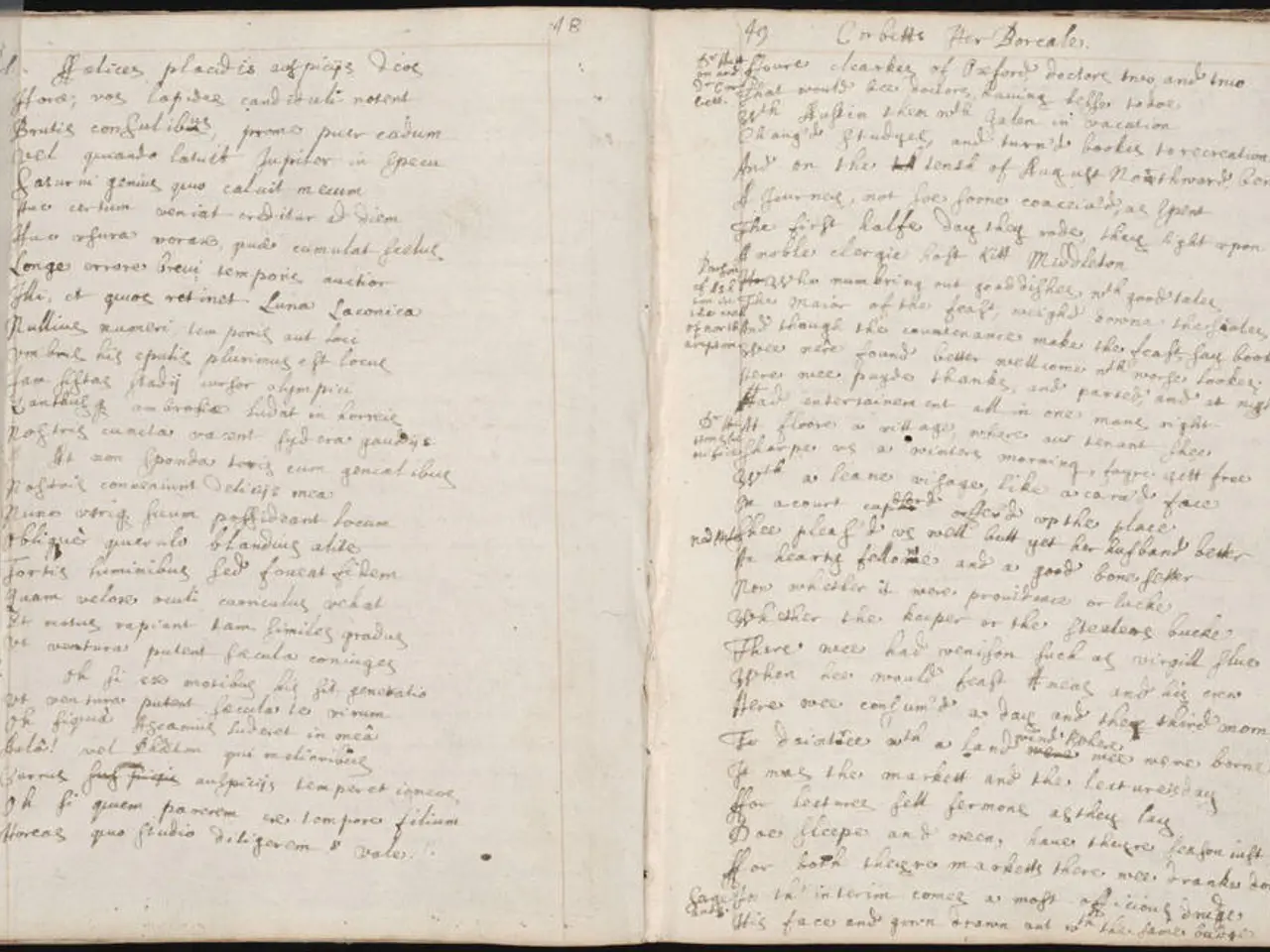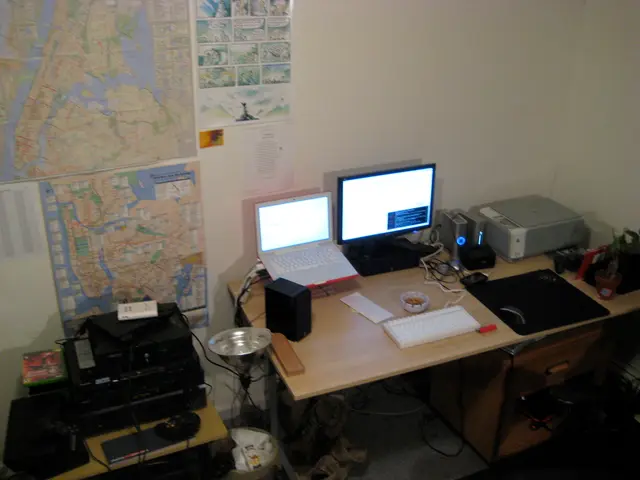Explore Unbridled Imagination: Leveraging Public Domain Assets for Screenwriting Purposes
In the ever-evolving world of screenwriting, public domain materials offer a treasure trove of inspiration and creative freedom. From classic literature to timeless folk tales, these works have stood the test of time and are now freely available for anyone to use.
Screenwriting tools like Scrivener and Final Draft come in handy for researching and drafting screenplays based on public domain materials. They provide a structured environment to organise ideas, develop an outline, and write the first draft.
The process of revising and polishing a screenplay involves seeking feedback from trusted peers or industry professionals. It is essential to consider their insights and suggestions to refine the script and create a compelling narrative.
When it comes to finding public domain works, resources are abundant. Online databases such as Project Gutenberg and the Internet Archive, government and educational resources, traditional libraries and archives, all offer a wealth of material waiting to be adapted.
Researching and analysing the original work is crucial. Understanding its themes, characters, and plot intricacies, and studying the historical and cultural backdrop at the time of its creation, help in creating a faithful yet fresh adaptation.
Successful adaptations of public domain properties, such as "Romeo + Juliet" (1996), "Clueless" (1995), and "O Brother, Where Art Thou?" (2000), demonstrate the importance of a fresh, creative perspective when dealing with public domain materials.
Different countries have varying copyright durations for public domain works. For instance, works published in Canada more than 50 years ago, but after the death of their author, are likely public domain. Works enter the public domain when their copyright expires (lasting for the life of the author plus 70 years) or when creators deliberately release their works into the public domain.
Using public domain works offers cost savings, instant recognition and appeal, creative freedom, and a proven storytelling foundation for screenwriters. Types of public domain works ideal for adaptation include literary classics, folk tales and myths, and historical texts. Examples of public domain works include literary classics by authors like Shakespeare, Twain, and Austen, folk tales and myths, and early 20th-century films and musical compositions.
When evaluating potential works for adaptation, consider their cultural and historical significance, originality and adaptation potential, and narrative richness. It is essential to choose the right source material that resonates with contemporary audiences.
Public domain properties can include literature, music, art, and certain scientific texts. Well-known works in the public domain suitable for film adaptations include classic literature by authors such as Christoph Martin Wieland and Theodor Storm, whose works are no longer under copyright and can freely serve as source material.
Adapting a public domain work into a screenplay requires careful consideration. It is essential to choose the right source material, develop a unique adaptation angle, and infuse the story with a unique voice and vision. Deciding how much to adhere to the original versus modernizing or reimagining elements is a crucial part of the process.
Online repositories, like the Internet Archive and Public Domain Review, offer access to a vast collection of public domain texts, audio, and video materials. Legal and research tools, such as the U.S. Copyright Office and Cornell University Library, provide guidance on copyright issues and help verify public domain status.
In the European Union, the copyright duration generally follows the life plus 70 years rule, similar to the U.S.
Using public domain properties for screenwriting can open a world of possibilities, allowing screenwriters to create unique, engaging screenplays that captivate audiences. With the wealth of resources available, the world of public domain screenwriting is a rich and exciting frontier for any aspiring screenwriter.
Read also:
- Increased Investment in AI, Machine Learning, Internet of Things, and Quantum Computing to Propel Growth in the Digital Economy (2020 Budget)
- Interview Questions for Dan Keyserling, Jigsaw's Chief Operating Officer
- Elevate Your Earnings: Gain Higher Wages with Information Technology Certification
- Transformed Cybersecurity Profession: Leveraging Online Education for Thriving Careers







